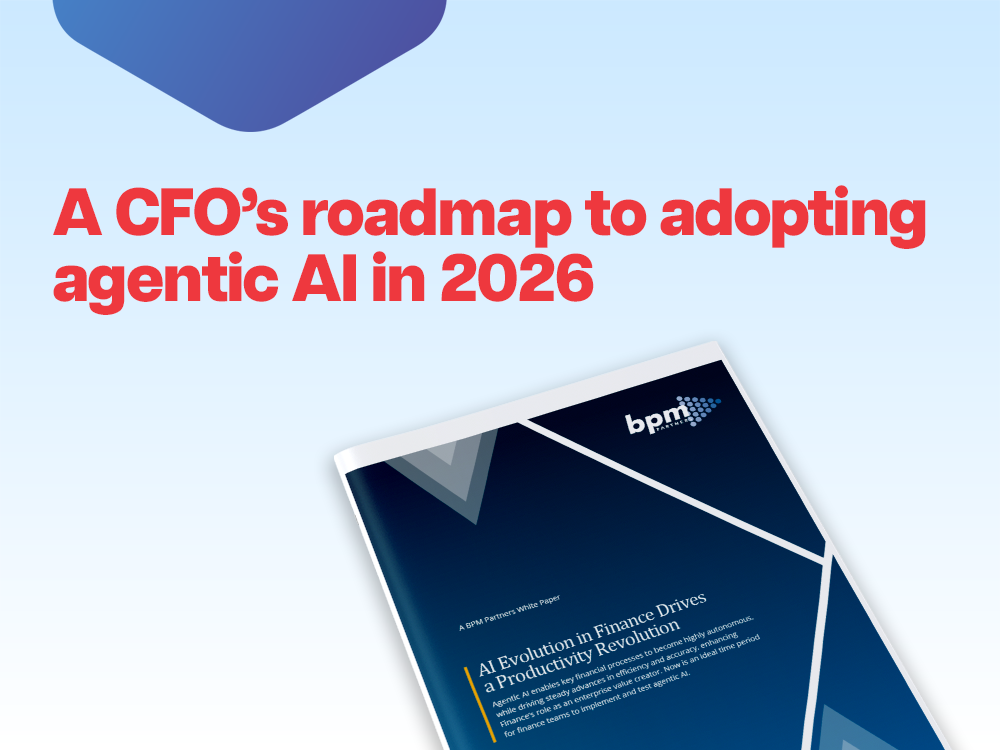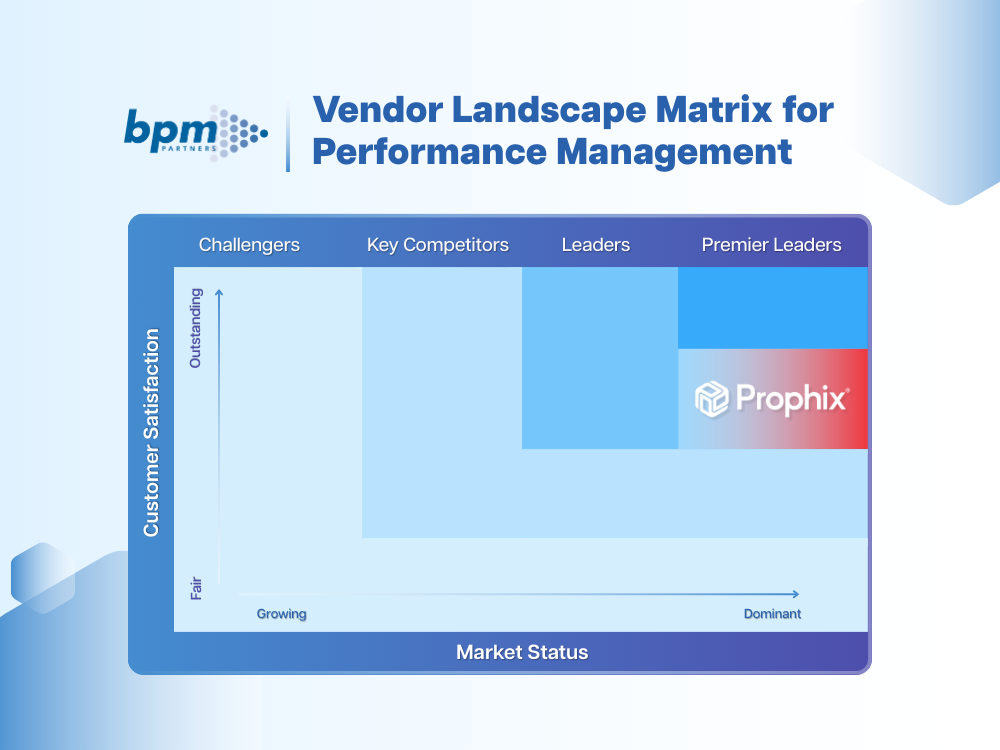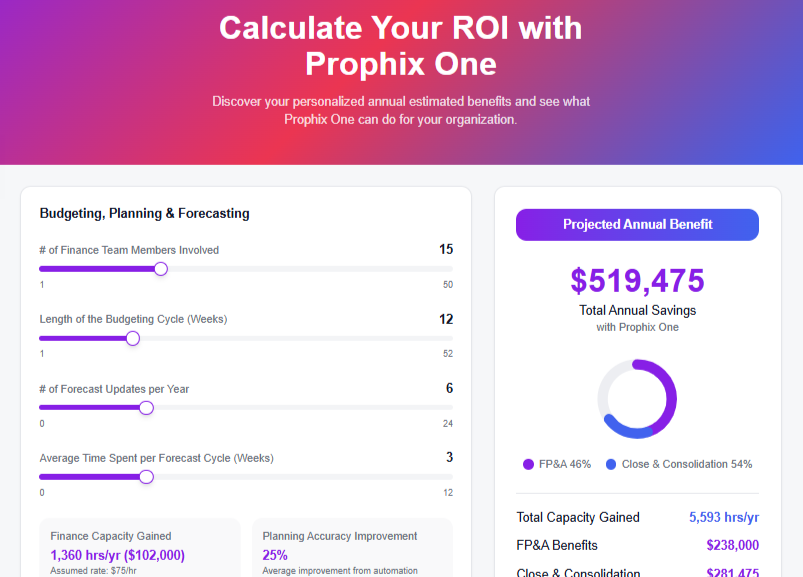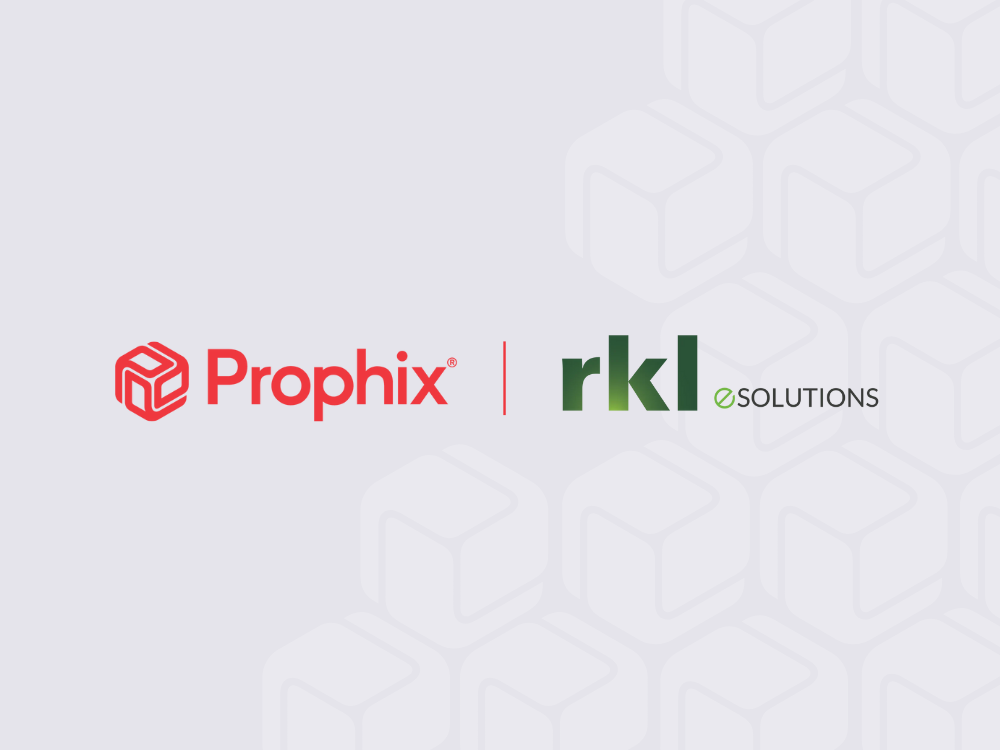Download Analyst Report
3 Reasons You Need Corporate Performance Management Software
Performance Management has the power to alter your finance team’s productivity.
December 8, 2023After UPMC Insurance put Corporate Performance Management (CPM) software into action, they saved over 1000 hours on their budgeting and reporting processes.
Performance Management has the power to drastically alter your finance team’s productivity, cohesiveness, and insight, but how do you know if it will suit your organization?
In this blog, we’ll define both Corporate and Performance Management, and examine three reasons why your business would benefit from CPM software.
Defining Performance Management
Before diving into the merits of Corporate Performance Management software, it’s important to define and distinguish between the different types of Performance Management tools.
Broadly speaking, Performance Management is the process of making sure your company resources are being used in pursuit of your organizational goals and objectives.
A quick Google search reveals that “Performance Management” can also be used to refer to employee development. As such, it’s important to distinguish between the “human” (with its foundation in HR) and the “corporate” (led by finance and C-level executives) aspects of Performance Management.
For the purpose of this blog, Performance Management will refer to a set of “analytic processes that enables the management of an organization’s performance to achieve one or more pre-selected goals.” We’ll be discussing the “corporate” side of Performance Management, which is related broadly to business intelligence.
There are plenty of tools available that have been designed with this specific directive in mind – tools such as Corporate Performance Management, business intelligence, enterprise performance management, and more.
Nailing Down Corporate Performance Management
Gartner, one of the leading B2B industry analyst firms, defines Corporate Performance Management as:
CPM is an umbrella term that describes the methodologies, metrics, processes and systems used to monitor and manage the business performance of an enterprise. Applications that enable CPM translate strategically focused information to operational plans and send aggregated results. These applications are also integrated into many elements of the planning and control cycle, or they address BAM or customer relationship optimization needs.
CPM must be supported by a suite of analytical applications that provide the functionality to support these processes, methodologies and metrics.
We can narrow down this definition even further by focusing on the most common capabilities of Corporate Performance Management software:
- Used to manage a business
- Controlled by the finance department
- Automates repeatable processes
- A collaborative application that involves several people
- Records and analyzes the past & can help forecast the future
- Analytical, not transactional
Benefits of implementing CPM at your organization
- Improved workflow
- Simplified calculations
- Comprehensive corporate performance analytics
Improved Workflow
In most companies, Performance Management involves multiple people – from C-level executives to back-office administrators. While not everyone is actively involved in the Performance Management process, many users still need to access and review reports.
This makes workflow one of the most compelling capabilities of Corporate Performance Management software. Examples of workflow include:
- Marketing plans are entered and approved before users start entering sales forecasts
- Daily operational data is scheduled to import from an ERP overnight and reports from the data automatically distribute by email
- In the monthly financial consolidation process, managers are asked to approve the adjustments that are made to financial data
CPM software can also automate financial processes indirectly tied to workflow including:
- Automatic notifications to users reminding them of deadlines
- Scheduling processes that run at pre-arranged times (e.g. overnight) or after the completion of contingent events (i.e. after billing rates have updated)
- Requesting users to approve data that has been entered or imported
- Distribution of reports using email or by publishing to Microsoft SharePoint
- Providing users with access to predefined templates for data entry
- Performing calculations such as allocations and currency conversion
- Importing data from external sources

Simplified Calculations
The forward-looking nature of CPM software means that it requires more calculations than business intelligence applications, which can be limited in their view of data.
Corporate Performance Management software combines spreadsheet-style calculations and an OLAP (Online Analytical Processing) database for simplified data aggregation.
Those already familiar with Excel can use Corporate Performance Management software to add ratios and other statistics metrics to a report using spreadsheet-style calculations. In fact, CPM software can pass data between Excel and the software so that all calculations possible in Excel can be incorporated into a business model.
Performance Management tools are also capable of running large-scale calculations within a model including:
- Calculating a ‘first pass’ of a plan by copying historical expense data and increasing it by an inflation factor
- Allocating costs to activities, products, and/or customers to perform profitability analysis
- Performing scenario analysis by easily adjusting data in multiple scenarios
- Modelling growth and inflation calculations
- Phasing annual data across months
- Locking actual data for historical periods and reallocating costs to remaining months
- Calculating top-down budgeting based on prior year actual data and allocating adjusted numbers to individual departments
Unlike other Performance Management tools, implementing calculations in Corporate Performance Management software does not require customization or an extensive knowledge of scripting languages. The interface is designed to be easy-to-use and address the needs of finance professionals.
Comprehensive corporate performance analytics
One of the primary benefits of CPM software is the level of detail it offers data analysis. With improved insight, you’ll be better equipped to demonstrate the value of finance data to your department, your company’s c-level executives, and beyond.
Many CPM vendors also offer dashboards, which can help display your data in a visual way – giving you an overall view of your company performance.
Did you know? Only one-third of organizations currently use data to identify new business opportunities, forecast, and make decisions. Comprehensive data analysis will give your company a competitive edge, allowing you to use your data to make informed strategic decisions.
In-depth data analysis will allow you to:
- Drill down on data, based on the data you’re viewing
- Swap rows and columns
- Access a recall button to return to previously viewed data
- Select the accounts, time periods, and organizational entities you want to view
- Save data views for later analysis
- Integrated access to structured analytical tools
- Data visualization using charts & graphs
Conclusion
If you’re struggling to manage your workflows, run large-scale calculations, and get insight from your data analysis, your organization would benefit from a Performance Management tool. In this article, we covered three reasons why you should choose Corporate Performance Management software for your Performance Management needs.
As a reminder, here is what CPM software can offer you:
- Improved understanding of business operations
- Automate repetitive processes and build comprehensive workflows
- Build dashboards that provide comprehensive, easy-to-understand views of company performance





